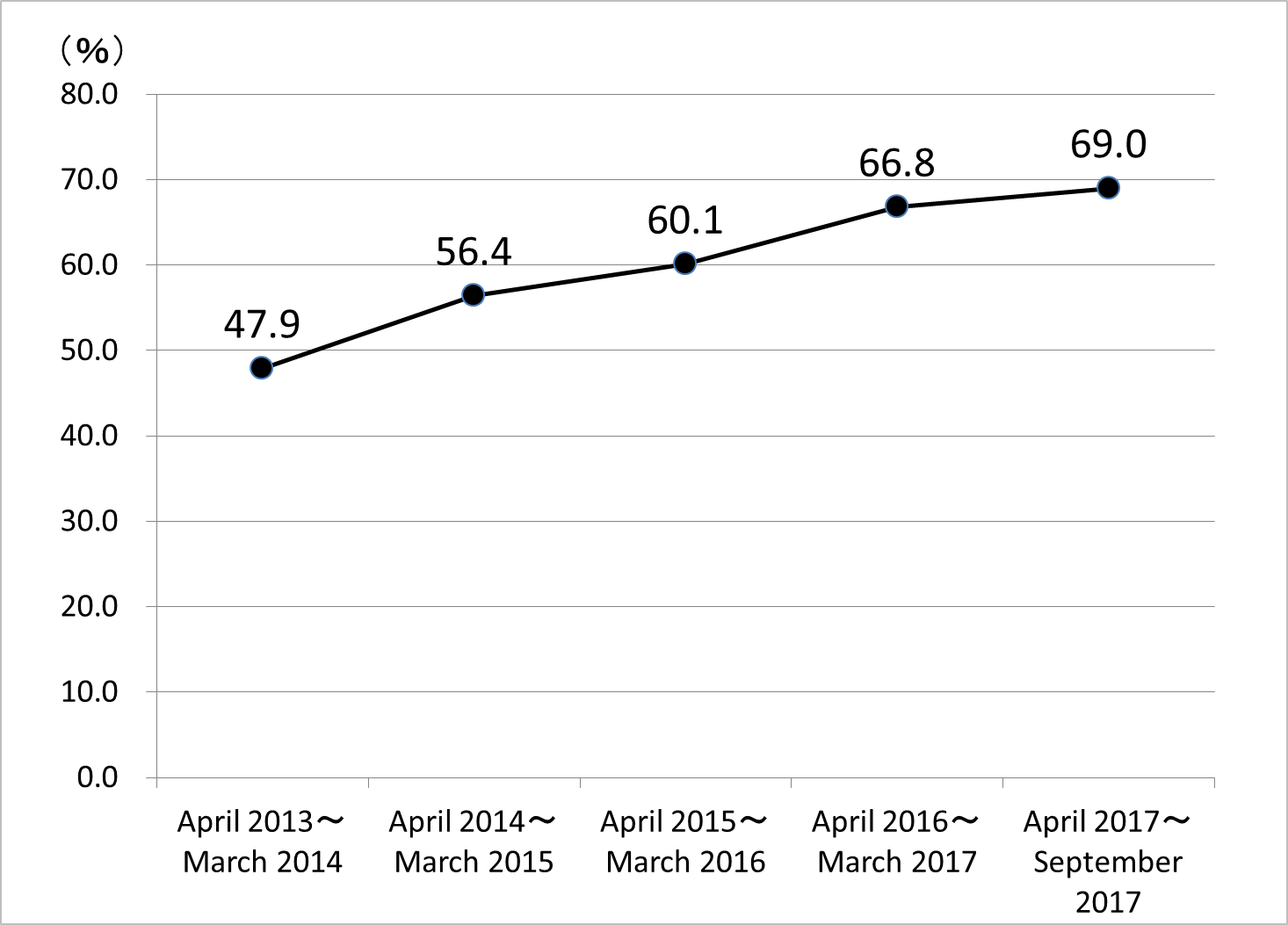Column Finance and the Social Security System 2018.03.07
【Aging, safety net and fiscal crisis in Japan】No.54: Regional Disparity in the Use of Generic Drugs
Increasing the proportion of generic drugs in prescription medicine in order to limit the growth in medical expenses has become a major policy issue. Figure 1 shows that the ratio of generic drugs to total prescription drugs on a quantity basis is rising.
The problem is that there are significant disparities in this ratio among the 47 prefectures, ranging from 60.3% in the Tokushima Prefecture to 80.0% in the Okinawa Prefecture. The government aims to bring it up to 80% nationwide by 2020. In 2015, the proportion of generic drugs accounted for 14.2% of the total prescription medicine amount (7,983 billion yen). This share increased to 16.7% in the period between April 2017 and September 2017.

(Source)Ministry of Health, Labor and Welfare
